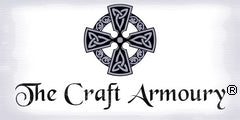Jewellery Sizing
How to choose the right length to ensure a perfect fit.
Bracelets
It can be tricky to know the right length to select when it comes to bracelets, since a variety of things will affect the size you need, such as the width of the piece, and the clasp type. For example, toggle clasps tend to add more overall length to a bracelet, but the length is shortened when fastened, while the wider a bracelet is, the longer it will need to be to fit well (due to needing to fit around wider sections of your wrist). The type of fit you prefer (snug or loose) will also affect the length required.
For these reasons, in each product description I also provide some sizing recommendations for each length that is available, or how much length over your wrist measurement to allow for a good fit. However, these are intended as a general guide, so to ensure a bracelet will fit the way you would like it to, you may also like to test the sizing with either a measuring tape or a strip of paper by wrapping around where the bracelet will sit on your wrist - allow a small margin for comfort.
If using a paper strip, mark where the end meets and then measure the strip with a ruler (if the bracelet is a wide cuff, you will get more accurate results by using a strip that is as close to the width of the bracelet as possible).
Necklaces
A necklace can often be easier to find a suitable length, however for collar and choker necklaces, which sit higher around the neck, I recommend measuring where the necklace will sit either with a measuring tape, or using the paper strip method outlined above - allow a margin for comfort.
The image below is a guide to the average fit for necklace lengths, but body type and size can affect where a specific length will sit. For men's sizing, on average I recommend adding 5-10cm to the lengths below for the equivalent fit (for example, to purchase a necklace that will sit where the 55cm length is indicated below, you may need a 60-65cm length). To test the length first, the paper strip method is less suitable for longer pieces, but you can achieve similar results with some ribbon or cord.

Rings
If you are unsure of your ring size, you can also use the paper strip method to find out (string or something similar that is narrow can also be used). Ensure that the finger you measure is the one that will wear the ring, and for best results, measure at the end of the day, when the finger size will be slightly larger (allow a small margin for the knuckle, as well). Measure the strip in milimetres (mm) and find the closest match listed under 'Inside Circumference' in the chart below - Maille Addiction uses US sizing for rings, so if you already know your size for a specific region, the chart will show the equivalent US size.

